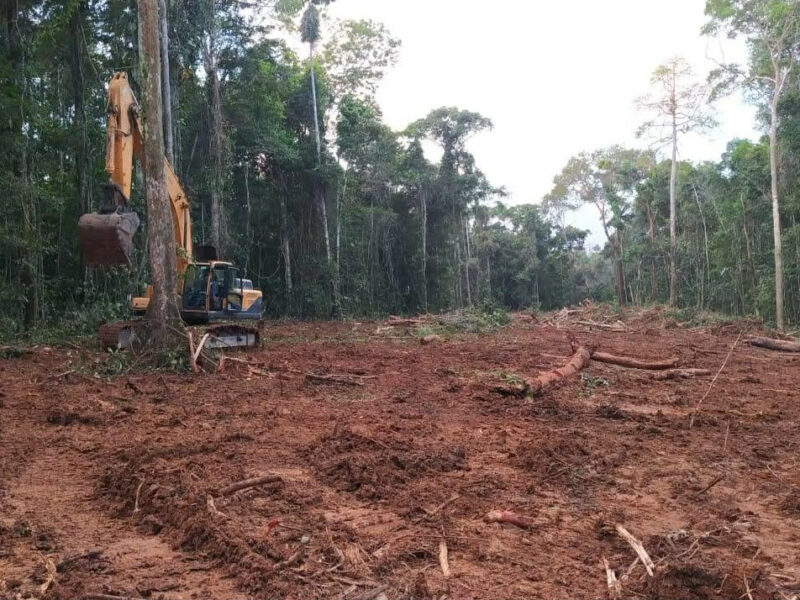Quito, Ecuador – Environmentalists occupied the lobby of Ecuador’s Environmental Ministry on Tuesday to protest a pending environmental license that would open the Ishpingo oil field, part of the ITT (Ishpingo, Tambococha, Tiputini) reserve designated as “Block 43” inside the wor
ld-renowned Yasuní National Park.
Granting the environmental permit would pave the way for the construction of some 293 oil wells and nine platforms in the southernmost part of Block 43 and overlap a newly created buffer area to the protected “untouchable zone” of the park.
Despite being a UNESCO “Man and Biosphere” Reserve and a National Park, eight oil blocks overlap it. Yasuní is widely considered one of the most biodiverse places on the planet, with the highest concentration of tree, insect, amphibian, bird, and mammal species per hectare in the world. It is also home to the Tagaeri and Taromenane peoples, the last two indigenous groups living in voluntary isolation in Ecuador. Violent encounters between Tagaeri and Taromenane and the outside world have spiked over the last several years as oil drilling, illegal logging, and roads have further encroached upon the areas these nomadic groups use.
As a result of the protest they led, a delegation of environmentalists from the organization Yasunidos met with Minister of the Environment Tarcicio Graniza, where they expressed their opposition to the license and drilling inside of the park. They were told, however, that the drilling project is the jurisdiction of the Hydrocarbons Ministry, despite its location in a National Park.
Drilling began along the border of the park in 2016 at the Tiputini field. Despite pledges of minimal environmental impact and “ecological trails” instead of roads, satellite images show major swaths cut into the forest. A second well was opened in the Tambococha 2 field in early 2018. The Ishpingo field is expected to be the largest of the three, and it is the deepest inside the park.
The Ishpingo, Tambococha, and Tiputini (ITT) fields were originally part of the Correa administration’s failed Yasuní-ITT initiative – launched in 2007 – which sought international financial contributions in exchange for a pledge not to drill in the reserve.
The ITT wells have quickly become Ecuador’s biggest producer, at some 70,000 barrels a day. Ishpingo is expected to add 30,000 to that, and by 2022 the three fields will have some 650 wells and will produce roughly 300,000 barrels per day – more than half of the country’s existing production.
Amazon Watch research has shown that the majority of crude oil exports from the Western Amazon ends up in the United States – and most of that in California. Ecuador is the Golden State’s second largest source of foreign oil, behind only Saudi Arabia.
California’s consumption of this controversial crude from Ecuador’s Amazon, and Yasuní in particular, is part of a 800+-organization campaign pressuring California’s governor Jerry Brown to commit to phasing out California’s oil production – including refining – in the run-up to the Global Climate Action Summit (GCAS) this September, where the governor will position itself as a climate leader in the face of climate change denial from Washington.
Quotes
“Yasuní is one of the worst places in the world to drill for oil. At a time when the world needs to accelerate a managed decline of fossil fuels to avoid catastrophic climate change, we should not open up new drilling sites beneath one of the world’s most important forests.”Kevin Koenig of Amazon Watch
“Not only is it ridiculous to be drilling in a place as biodiverse as Yasuní, it threatens isolated indigenous peoples with genocide. Allowing industrial oil extraction inside a buffer zone completely defeats its purpose. How is it possible that a country that was first to recognize the Rights of Nature would allow something like this? Furthermore, the Environment Ministry should be an independent agency, but instead it is bowing to pressure from the Hydrocarbons Ministry.”Patricio Chávez of Yasunidos













